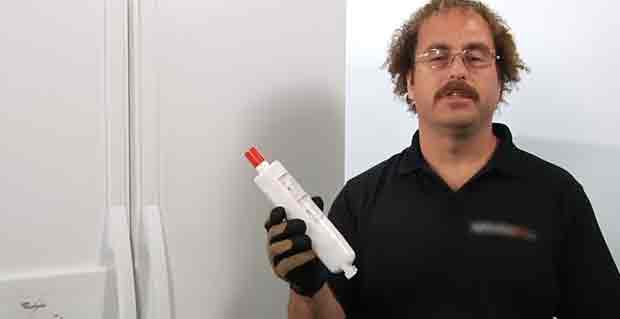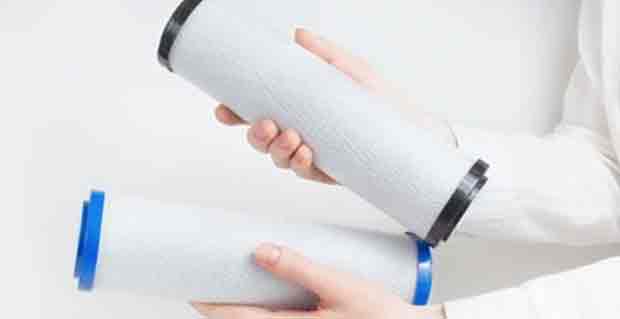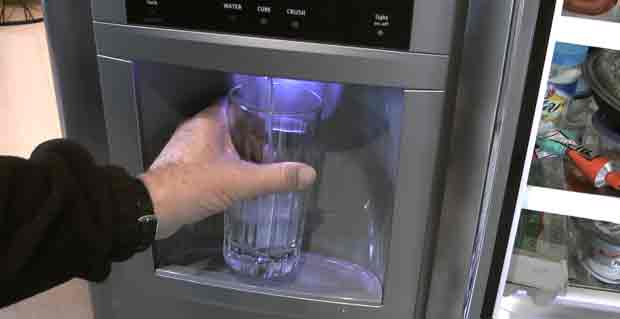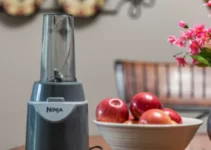Owning a high-tech refrigerator is a luxury many people will be able to appreciate.
Something about the convenience that comes with having a refrigerator that always has a ready supply of ice and water to offer just works to make daily life a little bit better.
Of course, the only drawback that comes with owning a refrigerator that offers such luxuries is that you have to do different things to keep it properly maintained.
For instance, changing refrigerator water filter is now something you have to be mindful of as well if you want to ensure that you are always getting top quality water and ice.
4 Easy Steps of Changing Refrigerator Water Filter

Before you go looking for a handyman or a different skilled worker to take on the task of changing your refrigerator’s water filter, you should know that this is a job you should be able to handle yourself, even if you don’t know a ton about refrigerators.
Given the way that most modern refrigerators are designed, you won’t need to follow a complex set of instructions just to switch out filters. You can also notes that the water supplies of newer refrigerators will be turned off automatically once the filter has been removed.
To ensure that you are getting the right replacement filter from your fridge, remove it first, and take it to the store with you to get an exact match.
1. Replacing Twist on Filters

There are three typical locations for twist-on filters. Manufacturers may install them in the front portion of the fridge just behind the bottom grill. They may also place it inside the fridge located close to the compartment. You may also find a twist-on filter near the bottom portion of the refrigerator.
The changing process:
- Once you’ve spotted the twist-on filter, you should give it a quarter turn counter-clockwise and then give it a pull. That should spring it loose from the housing.
- Now that the filter is in your hands, you should take off its cover and place that on the replacement you just bought.
- Install the new filter by pushing it into the space vacated by the old one and then giving it a quarter turn clockwise until it is secured.
2. Replacing Push in Filters
Refrigerator manufacturers have three preferred spots for push-in filters. The first is that spot behind the bottom grill located in the front part of the refrigerator. The manufacturers also like to install it near the top of the back compartment. Lastly, you may also find the push-in filter in one of the fridge drawers.
The changing process:
- Push the button located next to the filter to release it and then pull it out.
- If there’s no button present, push the filter itself in and then pull it from the fridge.
- Unfasten the cap on the old filter and put it on the replacement filter.
- Put the new filter into the refrigerator by pushing it into place and waiting for it to be secured.
3. Don’t Forget to Flush the Newly Installed Filter

The process of changing the filter does not end with installing the replacement. You will also have to flush the filter properly before you can start getting cold water and ice from your fridge on demand again.
Flushing the filter is done to get rid of the excess carbon.
Now, what’s important to note here is that there is no real danger in drinking a glass of water even if the filter has not been flushed out yet. The same can also be said for using ice infused with some carbon particles.
The only real reason why you will want to flush the filter is because grayish water and ice cubes are not very appealing.
The flushing process:
- Allow at least a gallon of water to go through the dispenser.
- Collect the water produced and dispose of it in the manner you prefer.
- Continue until the water is clear.
- Repeat the same process with the ice maker.
4. Additional Information on Changing Refrigerator Filters
Just like any type of filter, the ones installed in refrigerators are designed to get rid of possible contaminants and to make sure that they get nowhere near the water and ice you and your family consume.
The process of changing filters differs depending on the type of refrigerator you have in your home, but there are still some general guidelines that you need to keep in mind.
Do I Really Need Water Filters in My Refrigerator?

The reasoning behind having a water filter installed on your refrigerator is simple.
Having safe drinking water is important, and by having a filter installed on your fridge, you are effectively eliminating the possibility that any harmful substance will get through and cause you and your family to fall ill.
Being extra safe with the water you drink on a daily basis is never a bad idea.
How Often Should I Change the Refrigerator Filter?
Refrigerator filters are quite durable, but they still need to be replaced if you want them doing their job perfectly.
You should consider replacing your filter after every six months. Doing so will ensure that you will get contaminant-free water each time you get yourself a glass.
Where Can I Find the Refrigerator Filter?
In most cases, the refrigerator filter will either be located behind the bottom grill at the front portion of the appliance or near the upper right corner at the back.
As noted earlier in this article however, some refrigerators have different spots allocated for the filter. Make sure you refer to your fridge’s manual first before you proceed.
What Will Happen If I Fail to Replace My Refrigerator Filter Regularly?
Filters are designed to keep contaminants away from your water supply. At a certain point, they will get worn down, and it will be tougher for them to do the job they were designed for.
If you are unable to replace a refrigerator filter on time, then you will likely have to drink water that has been unfiltered. You will also have to take on any potential health risks that come with consuming unfiltered tap water.
Refrigerator filters can do so much good for you and your family, and there’s no reason to avoid getting one.
They are easy to obtain, and similarly easy to remove and replace, meaning you can always have one operating inside your fridge.
With a refrigerator filter keeping your water supply clean at all times, you can steer clear of numerous potential health issues, and save plenty of money in the long run.



